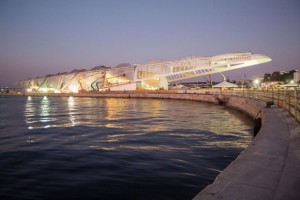Calatrava’s unique thumbprint – the union of form and spirit – on Rio
Rio’s new $54-million science museum bears the unmistakable imprint of Santiago Calatrava, which is to say the union of form and the spirit of freedom.
It looks like an airplane wing and is reminiscent of the wing-like brise-soleil he built at Milwaukee Art Museum’s Quadracci Pavilion.
Having seen the Quadracci Pavilion and many of Calatrava’s other buildings and bridges (not least the magnificent Puenta del Alamillo in Seville), it’s hard not to discern a metaphysical element in his work. I met Mr Calatrava in Chicago when he was commissioned to design the ‘Spire’, which would have been the tallest building in north America had it not been cancelled.
Next year, of course, there will be the Occulus, a structure above the World Trade Center Transportation Hub in New York. Originally, it resembled a bird being released from a child’s hand and was designed to mechanically open to increase light and ventilation to the enclosed space. Gradually, the soaring spike design was scaled back for security reasons and The New York Times suggested it might “evoke a slender stegosaurus more than it does a bird.”
The neo-futurist way in which Mr Calatrava views the world suits the Rio science museum whose essential concept according to its curator Luiz Oliveira is that “tomorrow will be a construction.”


